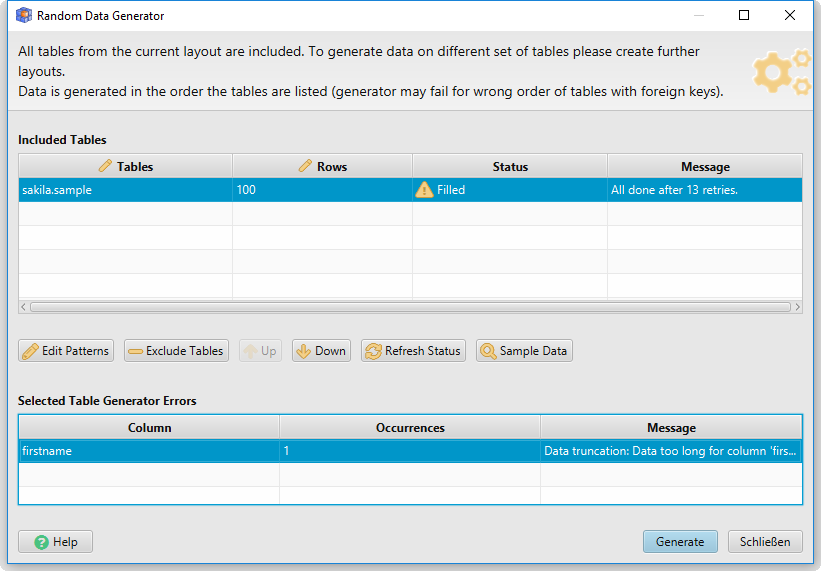
Specify Dept, Emp, Project, Category, Item, Item_Use, Sale by writing their CREATE TABLE and ALTER TABLE statements into an .sql file edited in DSE’s SQL scrapbook.Establish the database (Oracle in this case) connection via JDBC in IRI Workbench’s Data Source Explorer (DSE).

Here are the steps I followed, noting that I had my target table information, and that you will need the same: In my case, however, I created my set files manually: emp.set, t, t, t, t, t, and t.

A set file is text file with one or more rows, which can have multiple, tab-delimited columns you supply or auto-extract in another Workbench wizard, Set File from Column. In this article, I will demonstrate how you can use IRI Workbench to create target tables in Oracle and diagram their schema, and then use one of its RowGen wizards to generate and load test data into those tables.Īs an aside, I also want RowGen to insert randomly selected real values into certain columns from set file data. Though it relies on existing metadata for each test table, you can also customize - and generalize via rules - the generation of column values. One of the most useful is the New RowGen Database Test Data Job wizard, which builds an entire RowGen project to auto-populate multiple tables at once with pre-sorted key values and the opportunity for customization. The test data reflects production characteristics (such as values ranges and frequencies) normally encountered in database or ETL operations, but does not require access to, or the masking of, real data.Įnd-user job wizards for RowGen in the IRI Workbench GUI (built on Eclipse™) aid in test data generation. IRI RowGen users can generate structurally and referentially correct synthetic test data for an entire database in a single operation.


 0 kommentar(er)
0 kommentar(er)
